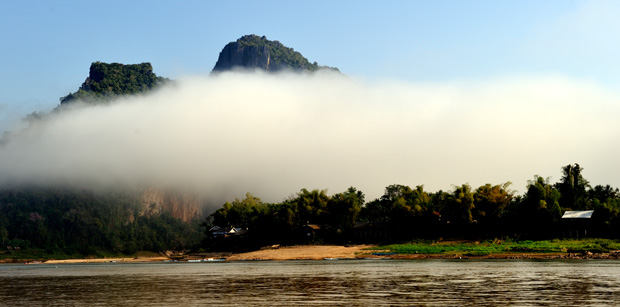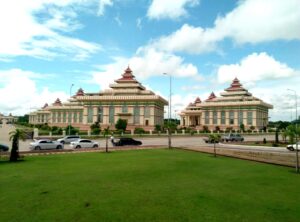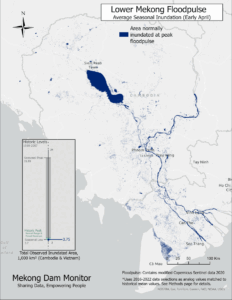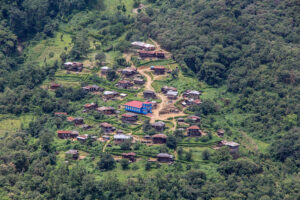The Challenge
Negative effects brought on by the poor planning for hydropower development in the Mekong basin will put the 60 million people living in the Mekong basin at risk and severely impact the river’s bountiful ecosystem. Laos alone has plans to build more than one hundred dams in the basin. Each time Laos notifies the Mekong River Commission (MRC) on the next major dam project on the Mekong River’s mainstream, the classic argument between dam proponents and anti-dam stakeholders reaches a fever pitch.
The MRC is required by the 1995 Mekong Agreement to facilitate a stakeholder consultation process for upstream and downstream countries for all mainstream dams. So far it has completed this process for two mainstream dams, the Xayaburi and Don Sahong, and currently the MRC is facilitating a third consultation for the Pak Beng dam. The regional consultation process might produce improvements to the ways displaced peoples are resettled or force a dam’s developer to build add-ons which might reduce downstream impacts, but never has the process been hailed as one that delivers sustainable and equitable results for those affected by a major mainstream dam.
The uphill battle over the next big dam on the Mekong consumes so much bandwidth among stakeholders that the damming of the rest of the basin often goes widely ignored. For instance, the mainstream Xayaburi dam is equipped with hundreds of millions of dollars of elevators and ladders to move migratory fish to past the dam. At the same time, important tributaries like the Nam Ou, just upstream from Xayaburi, can be absolutely wrecked by the building of seven dams each without an inch of environmentally friendly infrastructure. Further, this “project by project” approach to damming the Mekong does not promote discussion, at both the national and regional level, of how the entirety of the Mekong basin can be managed in an integrated fashion which would optimize the production of power and minimize downstream risk.
“The Stimson-led coalition delivers tools and frameworks that assist decision-makers in reaching those targets by promoting power grids and non-hydro renewable investments in solar and wind, which together can reduce the negative impacts of hydropower development.”
Our Approach
The Stimson Center’s Southeast Asia program promotes policy solutions and research that help decision-makers and a wide range of stakeholders see the river as a holistic system with multiple, potential development pathways. From the perspective of hydropower development, these pathways would lead to roughly similar levels of energy generation but could deliver widely different environment and social impacts. For example, dams could be placed high in upstream portions of tributaries and away from the mainstream where most impacts are made. Further, national power grids purposed to include non-hydropower renewables can promote “doing more with less” and remove the most damaging dams from the river.
If the region were focused on power sharing and power trade, then each country could forgo maximizing the construction of its domestic dams and fossil fuel facilities. Equitable power trade facilitated by a regional power grid would do much to meet domestic power demand, and thus some of the natural productivity of the Mekong basin.
Stimson is leading a coalition of key institutions composed of IUCN, The Nature Conservancy, and UC Berkeley’s Energy and Resources Group to promote approaches to what we all call “strategic, system-scale water-energy development” in the Mekong basin.
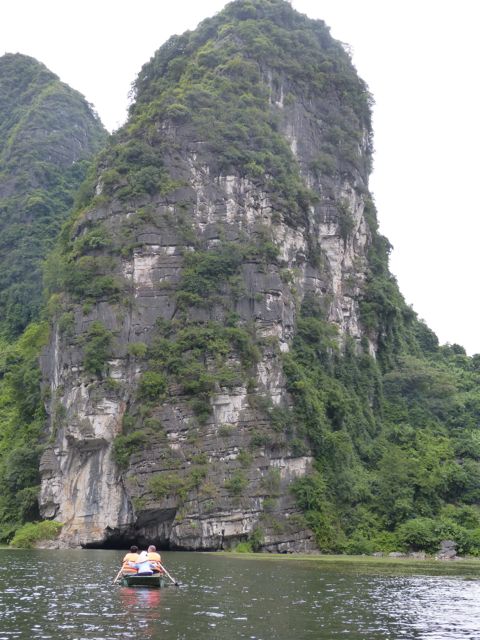
Our Impact
This discourse has gained much attention among decision-makers in the region. Our approaches ask key government planners, such as those in Laos, to identify the basin-wide targets for energy generation. Then the Stimson-led coalition delivers tools and frameworks that assist decision-makers in reaching those targets by promoting power grids and non-hydro renewable investments in solar and wind, which together can reduce the negative impacts of hydropower development.
Government planners in Laos have only recently given thought to what the finish line for power development looks like — and our work supports sustainable, and integrated management of the river’s system as a whole. Cambodia is only beginning to dam its portions of the Mekong, and its Ministry of Environment has expressed interest in working with Stimson to apply such approaches to its water-energy policy and strategizing.
Vietnam is a rising economic powerhouse and important neighbor to Cambodia and Laos. Vietnam’s downstream location and rising energy demand give it the perfect opportunity to deploy strategic, system-scale water-energy techniques. To date, Vietnam has been a vocal opponent of upstream dams in Laos and Vietnam at the diplomatic level. This opposition has made little tangible progress toward a more coordinated approach to water-energy coordination in the basin. We work with the Vietnamese government to increase economic and diplomatic engagement with Laos and Cambodia that will give Vietnam a seat at the negotiation table over the future of the basin.
In early 2017 at the Diplomatic Academy of Vietnam, our coalition kicked off a two-year, inter-ministerial capacity building program, which promotes the benefits of cross-border energy trade, hydropower development scenarios, and policy pathways to the promotion of renewable energy investments. The goal is to assist Vietnam in forming an all-of-government approach to water-energy engagement with its neighbors that meets economic development goals and reduces risk for the entire region.

